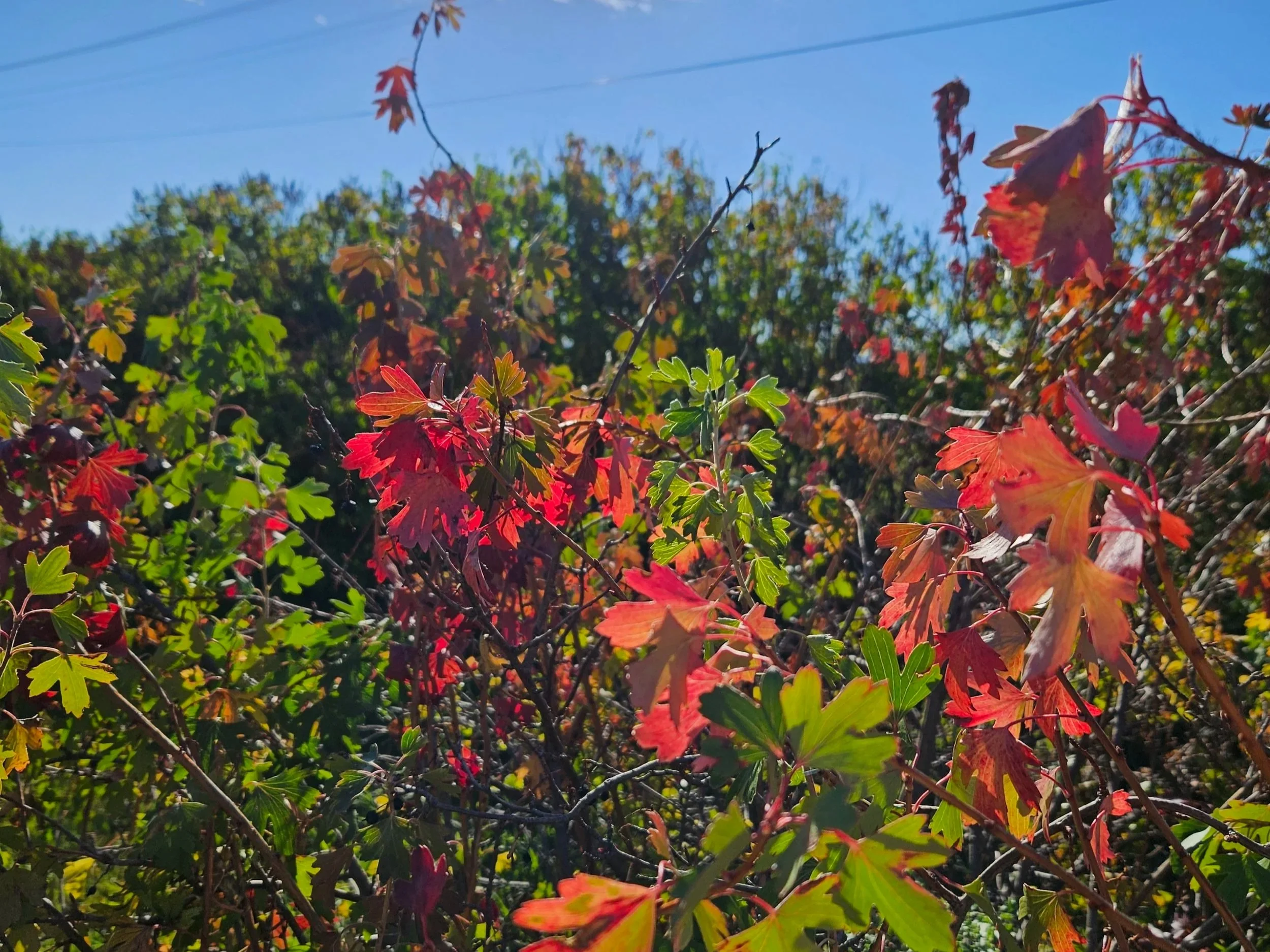Autumn slowdown?
The currant leaves are changing with the season.
No time for resting
September is over. We had one light frost the first weekend in September. While it just touched the tops of our plants, the frost slowed everything down. We were able to continue to harvesting the rest of the month. We quit selling produce about a week ago as everything had slowed down to the point it was only producing enough for our family. The forecast is for low thirties this weekend. We will defiantly frost here. We will pick the last of the raspberries this Friday though they have enough fruit on them for at least 2 to 3 more weeks. Maybe all the weather forecasters will be wrong and it will stay warm.
It rained half an inch the night of the 30th into the morning of the 1st, and more rain is forecasted over the weekend. This will really put a damper on a lot of projects we are trying to get done.
This month we want to get the asparagus beds prepped for spring; this entails cutting down the asparagus ferns (stalks) and burning the stubble. Asparagus beetles over winter in the debris and they can really put the hurt on the plants if not controlled. Burning the stubble in late fall will kill the beetles. We will apply a pre-emergent after we have cleaned the beds up. Pre-emergents stop annual weed seeds from germinating.
We will also be pruning raspberries this month. The floricane plants (spring to early summer) produce on 2-year-old wood. The canes that came up this summer will produce next year’s raspberries. we will cut out all but about 12 canes per foot. The primocane plants (last summer/fall) will all be cut to the ground. They will send up new canes next spring and will produce raspberries until it freezes. We burn the raspberry canes that were trimmed off along with trimmings from grapes and other bushes to help control any pests and disease.
We will be planting garlic this month (if it ever shows up in the mail) before the ground freezes. This year we are planting both hard neck and soft neck garlic. Soft neck garlic is what you buy in the stores. It has a longer storage life than the hard neck. Traditionally growers in cold climates have planted the hard neck garlic. I have talked to several people who are doing some research into growing soft neck garlic, they have had good results. Both these researchers work where there is snow cover all winter long, something we don’t have here. We shall see how the soft neck does.
We grow winter squash. Last year our red kuri squash out produced all the others. This year, red kuri came in a distant 4th to everything else. We chose to grow small spaghetti squashes this year as they are perfect for 1 to 2 people and we have enough for 100 people right now.
Recipe:
In honor of our abundance of spaghetti squash, this month’s recipe is for spaghetti squash taco bowls. You can add your choice of protein and toppings.
1 small spaghetti squash, halved and seeded.
1 tablespoon olive oil
1 clove, minced garlic
¼ cup onion
¼ cup green peppers (or whatever color you like)
1 teaspoon chili powder
1 teaspoon cumin
1 cup black beans, drained and rinsed
1/2 cup corn
Salt to taste
Top with salsa, sour cream, guacamole, cilantro, tomatoes and cheese.
Place the squash cut side down on a baking sheet. In a preheated oven, roast the squash for 20 to 25 minutes. The squash is done when you can easily pierce it with a knife. Cool the squash for 5 minutes. With a fork, scape the inside of the squash to pull the strands away from the edges.
In a skillet over medium heat, heat the olive oil. Stir in garlic, onion and pepper. Cook for until softened (just a few minutes). Add the spaghetti squash strands to the bowl. Add chili powder and cumin, stirring to coat. Add the black beans and corn. Cook for 5 minutes.
Serve with your favorite taco toppings.

